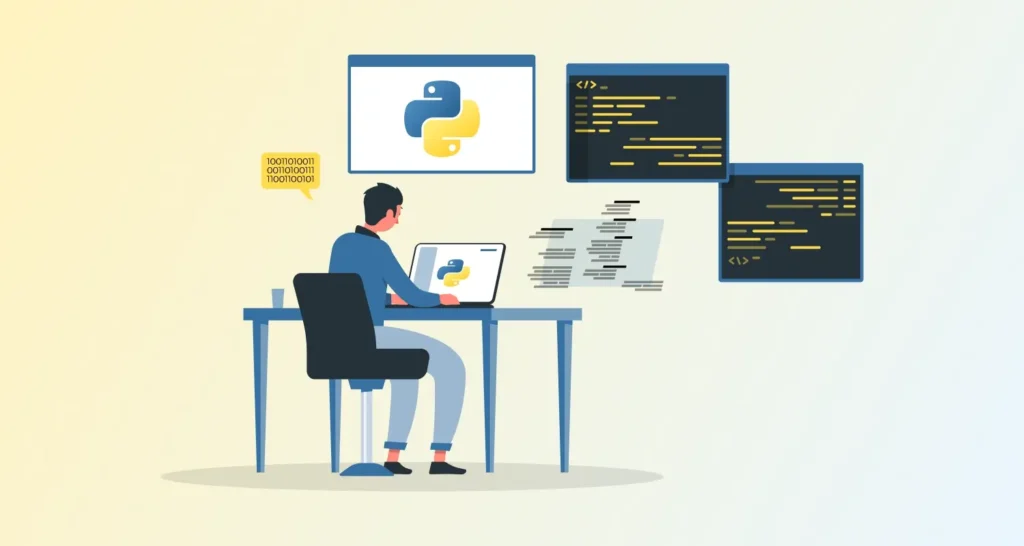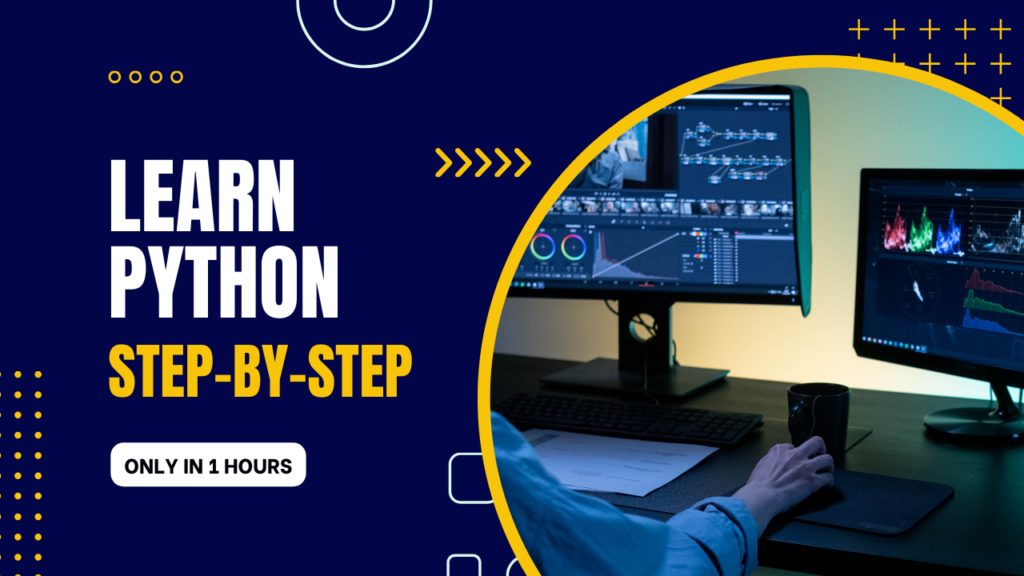Introduction:
Welcome to Techcodewithlearner.com, your go-to resource for mastering Python programming. In this beginner-friendly guide, we’ll walk you through the fundamentals of Python, catering to those just starting their coding journey.
Python is often the first programming language many beginners encounter, and for good reason. Its readability, versatility, and powerful capabilities make it a popular choice for aspiring programmers. Whether you’re a newcomer to the world of coding or someone looking to expand their skill set, mastering Python can open doors to a multitude of opportunities.

Basic Syntax and Fundamentals
Variables and Data Types
In Python, you don’t need to explicitly declare variable types. This flexibility allows for swift coding without worrying about variable declarations. The fundamental data types include integers, floats, strings, lists, tuples, and dictionaries.
Control Structures
Learn how to utilize control structures like loops (for and while loops) and conditional statements (if, else, elif) to control the flow of your Python programs.
Functions
Understanding functions is key to writing modular and reusable code. Dive into defining, calling, and passing arguments to functions in Python.
Intermediate Concepts and Beyond
Object-Oriented Programming (OOP)
Explore the principles of OOP in Python, such as classes, objects, inheritance, and polymorphism, which allow for efficient and organized code structuring.
File Handling and I/O Operations
Learn how Python handles files, reading from and writing to them, and manipulating file content for various applications.
Resources for Further Learning
Online Courses and Tutorials
There’s an abundance of online resources to deepen your Python skills. Platforms like Coursera, Udemy, and Codecademy offer courses suitable for all skill levels.
Documentation and Community Support
Python’s official documentation is an invaluable resource. Additionally, engaging with Python communities like Stack Overflow or Reddit’s r/learnpython can provide solutions to queries and foster learning through shared experiences.
Projects and Practice
The best way to solidify your Python knowledge is through practical application. Start small by creating projects like a simple web scraper, a calculator, or a basic game.
Chapter 1: Why Python? Exploring its Versatility and Ease of Use
Python stands out as a versatile programming language suitable for beginners. Its user-friendly syntax and broad applications make it an ideal choice for aspiring coders.
Python’s simplicity and readability make it an ideal language for beginners. Its syntax resembles natural language, reducing the learning curve for those new to programming. Moreover, its extensive libraries cater to various domains such as web development, data analysis, artificial intelligence, and more.
Setting Up Your Development Environment
To start coding in Python, you’ll need to set up your development environment. Thankfully, Python’s official website provides comprehensive documentation and installation guides for different operating systems.
Chapter 2: Getting Started: Setting Up Your Python Environment
Before diving into coding, let’s ensure you have Python set up on your machine. Follow our detailed installation guide for Python on Windows, macOS, or Linux systems.
Chapter 3: Python Basics: Understanding Variables and Data Types
Learn about Python’s variables and fundamental data types, including integers, floats, strings, lists, tuples, and dictionaries.
Chapter 4: Control Structures in Python: Loops and Conditional Statements
Explore how Python handles loops (for and while loops) and conditional statements (if, else, elif), crucial for controlling program flow.
Chapter 5: Functions: Writing Modular Code in Python
Dive into defining and utilizing functions in Python, enabling you to write organized and reusable code segments.
Chapter 6: Object-Oriented Programming (OOP) in Python
Discover the principles of Object-Oriented Programming in Python, including classes, objects, inheritance, and polymorphism.
Conclusion:
Congratulations on embarking on your Python programming journey! Remember, practice and exploration are key to mastering any language. Explore our resources for further learning and stay tuned for more advanced Python concepts in our upcoming blogs.
Embarking on your Python journey may seem daunting initially, but with perseverance and dedication, you’ll find yourself navigating this versatile language comfortably. Stay curious, practice regularly, and don’t hesitate to seek help from the vast community of Python enthusiasts.

